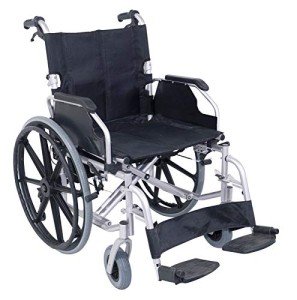Additional Wide Bariatric Wheelchair With 24" Seat
Frame

Wheelchairs are usually manufactured in a basic width of 16" (narrow grownup), 18" (standard adult) or 20" (broad grownup). Nevertheless, some wheelchair users need a seat width broader than these standards. These additional large bariatric wheelchairs are generally fitted by a professional and based on the user's measurements.
In order to get the most comfy and protected ride for passengers, it is necessary that wheelchairs are appropriately sized. This means that the wheelchair should be able to accommodate the user's size while having the ability to steer in tight spaces. This is why BriteLift uses personalized lorries to transport wheelchair guests. This includes vans that can securely drive and steer large wheelchairs, enabling them to feel safe and comfy in every trip. This is the only method to offer the most effective transport for wheelchair passengers.
Seat
Bariatric wheelchairs are bigger than basic wheelchairs and are designed to accommodate people who are much heavier or wider. bariatric wheelchair for sale near me My Mobility Scooters from Medline includes a 24" seat and a carbon steel frame with rust- and chip-resistant chrome plating. The wheelchair has tool-free push-button adjustable footrests and easy-to-clean vinyl upholstery. It can support approximately 500 pounds.
When picking the right wheelchair width, it is important to determine the user sitting normally on a flat surface area throughout their widest part of the lap which is usually their hips. It is likewise suggested that you use a yardstick instead of a determining tape as it tends to provide a more accurate measurement. If the user will be using a winter season coat then an extra 2" should be added to the measurement of their seat width.
Weight Capacity
A bariatric wheelchair is typically larger and much heavier than standard wheelchairs. This is why they need more cautious maneuvering. Drivers need to be trained in managing these passengers. Additionally, cars need to have adequate room for these chairs in addition to ramps and wheelchair lifts. In addition, they need to understand how to schedule these rides beforehand.
When choosing on the chair width, it is essential to measure the user's largest point in the seat, which is normally the hips. Lots of wheelchair makers likewise use a yardstick that can be utilized to assist with this measurement. When determining a person's width, it is best to take the measurement directly across and not cover the tape around their hips which can offer an incorrect reading.
Sometimes, the widest part of an individual's thighs may be wider than their hips so this ought to be taken into account when choosing the chair width. In these circumstances, it is sometimes essential to include an extra 2" to the chair width.
In general, the weight capacity of a bariatric wheelchair ought to not be surpassed under any circumstances or severe injury might result. When utilizing the chair, constantly make certain that it is on a steady and level surface with front casters pointing forward and wheel locks engaged. In addition, never lean or move the center of mass while sitting in the chair.
